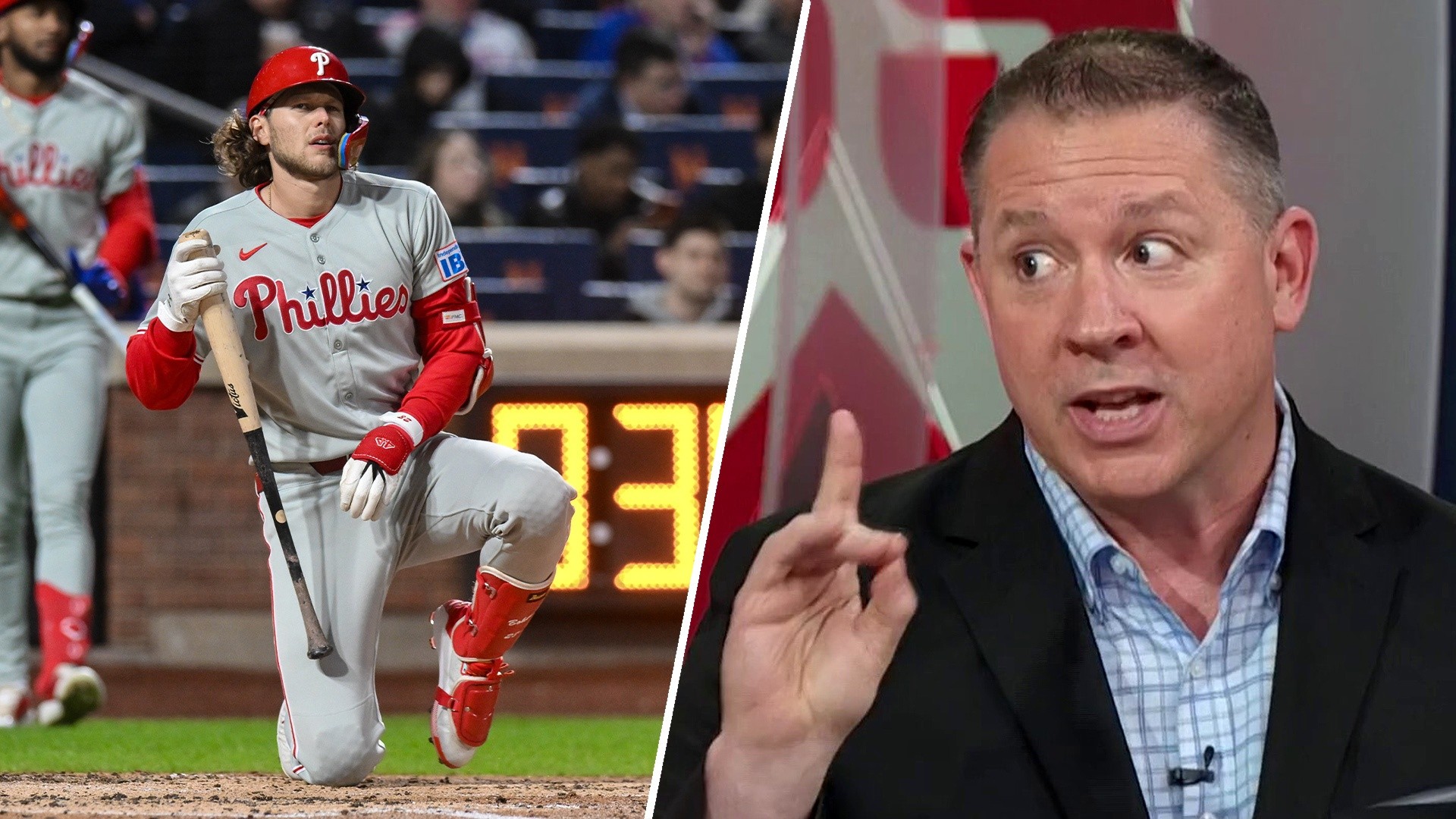
When Phillies prospect Roman Quinn takes inventory this week of all he is thankful for, he will be sure to include the worst moment of his young professional baseball career.
It happened just over a year ago during an offseason workout on a field in his hometown of Port St. Joe on the Florida panhandle. Quinn was ending the workout the way he usually does — with some sprints — when he fell to the ground with sudden and excruciating pain in the back of his right ankle.
“I just took off and it popped,” he said. “I never felt anything like that in my life. It felt like somebody kicked me in the back of my leg. I actually got up and looked around to see if somebody kicked me.”
Quinn went to the hospital. An MRI revealed a rupture of his Achilles tendon.
As a player, one of Quinn’s strengths is his speed. Offensively and defensively, his game is built on his legs. So when the doctor said, “Complete tear,” Quinn thought the worst.
“I thought that was it for me,” he said. “I really did.”
A year after the injury was surgically repaired, Quinn’s career is not only still alive, it’s thriving. The 21-year-old is completely healthy and his play in the Phillies’ minor-league system as well as the Arizona Fall League in 2014 solidified him as one of the team’s best and most intriguing prospects.
MLB
“It’s been a blessing,” Quinn said as he got ready for some downtime as the AFL season closed earlier this month.
Understand, he was talking about the injury, the very thing that he feared would end his career.
“It shaped my character, man,” he said. “It made me dig deep and find out who I truly was.”
And who is Roman Quinn?
“I’m a gamer, man,” he said. “I believe in myself a whole lot more than I did when I was younger. This thing changed my life.”
Quinn was effusive in giving thanks to the Phillies’ minor-league athletic training staff for rehabbing him and helping him get back on his feet. A year after the injury, his top-of-the-scale speed hasn’t suffered a bit. He led the AFL with 14 stolen bases in 16 attempts playing for the Scottsdale Scorpions.
“I never saw him before the injury so I can’t compare,” said Ray Burris, the Phillies’ Triple A pitching coach who also served as Scottsdale’s pitching coach. “I just know he’s fast. His running is stellar.”
“He’s an 80 runner,” said general manager Ruben Amaro Jr., referring to the 20-80 scouting scale. “As fast as you’re going to get on a baseball field.”
The Phillies drafted Quinn in the second round (66th overall) in 2011. He reminded Phillies scouts of a young Jimmy Rollins. Though he stood just 5-9, he was fast and athletic. He was blessed with excellent baseball instincts. In high school and on amateur travel teams, Quinn played both shortstop and center field. The Phils had Quinn begin his pro career as a shortstop with the knowledge that he could one day end up back in center field.
That day arrived this past summer when it became clear that 2013 first-round pick J.P. Crawford was blossoming into the Phillies’ shortstop of the future. When Crawford, 19, was promoted from Lakewood to Clearwater in June, Quinn was moved from shortstop to center field.
“At first it was kind of tough, but when they told me what their plans were for me, it made it a little easier,” Quinn said.
Those plans are pretty simple: The Phillies envision Quinn as their centerfielder and leadoff man of the future.
Quinn took to center field immediately.
“As soon as I got there I felt great out there and wanted to stay,” he said. “I felt like I was back at home again.”
It’s no secret that the Phillies’ farm system is thin. But in Quinn and Crawford, the Phils have two young players who project to play in the middle of the diamond in the coming years. The rough blueprint calls for both to get to Double A sometime in 2015, maybe early, maybe later, depending on their progress.
“Me and J.P. are real close,” Quinn said. “He’s a real good dude, real humble, and a heck of a player, too. Our goal is to get to Philadelphia.”
Quinn’s lithe body and diligent rehab work helped him to recover from the Achilles injury quickly and he got back on the field in Clearwater in May. He ended up hitting .257 with seven homers, 36 RBIs, 32 stolen bases (out of 44 attempts) and a .343 on-base percentage. He played 69 of his 88 games in center field.
In Arizona, Quinn was Scottsdale’s top centerfielder. In 24 games, he hit .250 with two triples, two homers and nine RBIs. He had a .361 on-base percentage. In addition to leading the league in steals, he finished second with 19 runs and fourth with 16 walks. He made the AFL All-Star team. Two scouts who saw Quinn regularly this fall confirmed that he was one of the league’s standout players, and MLB.com rated him as the 24th-best prospect in the league.
Quinn is already a good route-runner in center field and his arm is considered major-league average. Defense is a strength. The AFL was a good test for the offensive side of his game. He took up switch-hitting when he signed and is making strides from the left side.
“I’m recognizing pitches better and starting to control my bat better from the left side,” Quinn said. “I’m hitting the ball harder from the left side, too.
“Playing in Arizona was a great experience. It was the first time I got to see Double A and above pitching.”
Burris pitched 15 seasons in the majors from 1973 to 1987 so he’s seen a little baseball. While he enjoyed watching Quinn run the bases and chase down balls in the outfield this fall, he liked something else about the kid, too.
“He plays the game the way it’s supposed to be played and that’s gratifying and refreshing,” Burris said. “He’s going in the right direction.”
Yep. That torn Achilles tendon was just a detour. Roman Quinn is back on track and thankful for it.


